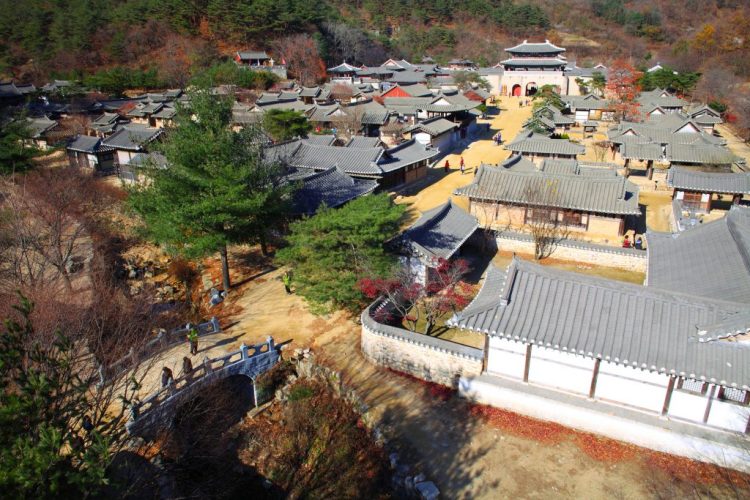The Paradox of Korea’s Tech Culture and the Need to Unplug
South Korea has long stood as one of the most connected countries in the world. With blazing-fast internet speeds, ubiquitous 5G coverage, and digital services embedded into daily life—from food delivery to government forms—it may seem like the last place one would go to digitally detox. And yet, in 2024 and into 2025, a quiet countertrend has taken root in the heart of its most scenic landscapes: “No-WiFi” hiking trails.
Led by the Ministry of Environment and local tourism boards, South Korea has begun actively promoting unplugged tourism through designated nature routes where connectivity is not just discouraged but intentionally eliminated. These trails, particularly in regions like Jirisan and Seoraksan, aim to restore the psychological balance of a population increasingly overwhelmed by the relentless pace of digital life.
It’s a curious contradiction. In the land of AI delivery robots and metaverse campuses, the most sought-after luxury in travel has become disconnection. The question is, can people actually do it?
From Notification Fatigue to Forest Silence
Urban life in Korea, especially in Seoul or Busan, is soaked in screens. Subway rides are filled with commuters glued to K-dramas, Instagram, or crypto market tickers. Restaurants buzz with QR code menus and mobile payment pings. Even the most mundane errands involve some digital engagement. It’s no surprise then that by late 2024, the term “digital burnout” was trending not just in wellness circles but also among students, tech professionals, and even content creators.
In response, South Korea’s government launched the “Silence in the Mountains” initiative—a nationwide effort to promote natural destinations devoid of cellular coverage. Jirisan National Park, home to the country’s largest land-based preserve, and Seoraksan National Park, a beloved alpine range, were the first to receive the new “Unplugged Trail” designation.
These trails don’t just lack Wi-Fi—they’re often beyond mobile network reach entirely. Signage along these routes actually celebrates this disconnection, with slogans like “No Signal, All Soul” or “Leave Bars Behind, Find Your Balance.” Hikers are encouraged to power down devices entirely and re-engage with the textures, sounds, and smells of the forest.
Nature as a Medium for Digital Fasting
The Korean tourism bureau now refers to these experiences as “digital fasting retreats,” borrowing language typically associated with nutrition or wellness. But the comparison holds up. Just as intermittent fasting resets one’s physical cravings, digital fasting is believed to reset the brain’s dopamine cycles by minimizing artificial stimulation.
At Yeonhwasan in Gyeongsangnam-do, one of the smaller but increasingly popular “silent peaks,” hiking guides now begin tours with 10 minutes of breathing meditation, asking participants to physically hand over their devices before ascending. The absence of constant checking—no Google Maps, no step counters, no TikTok filters—frees up mental bandwidth. Hikers report feeling not just more present but more observant, able to notice subtle shifts in wind, birdsong, and even their own breathing rhythm.
Influencers who once curated every summit photo for likes are now praising “ghost hiking”—walking without documenting. Some have started a new hashtag, #BlindPeak, to celebrate these Wi-Fi-free accomplishments without using real-time GPS or signal. It’s an unexpected twist in Korea’s influencer economy: bragging rights for having no posts from a trip.
The Role of Social Media in Promoting Anti-Social Media Travel
Ironically, the popularity of these digital detox trails has been amplified by the very platforms they reject. YouTube videos showing hikers reflecting on their screen-free weekends, Instagram carousels with captions like “I didn’t post this while I was there,” and TikTok vlogs edited days later have driven a new kind of FOMO: fear of missing in the moment.

Travel creators like @WanderWithYuri and @TrailResetKorea have championed Jirisan’s Banyabong and Seoraksan’s Ulsanbawi trails, not for their photogenic qualities (though they’re stunning) but for the deep emotional decompression they offer. These influencers often speak of nature not as an aesthetic backdrop but as a space for inner repair.
Seoul-based lifestyle guru Minju Park, who once gained popularity for unboxing luxury gadgets, now runs a monthly series called “48 Hours Off Grid,” exploring different parts of Korea with zero connectivity. Her latest episode, shot in Naejangsan in full autumn foliage, ends with a whispered reflection under a maple tree: “Silence has rhythm, too.”
Physical Beauty Meets Emotional Restoration
Beyond the psychological benefits, the trails themselves are objectively breathtaking. In Seoraksan, the granite spires of Ulsanbawi rise like sentinels above a sea of clouds. Streams gurgle with mineral-rich water, and during late spring, the azaleas bloom in painterly pinks. Jirisan, meanwhile, offers moody forest trails, hidden waterfalls, and ancient pine groves that seem pulled from Korean folktales.
Many hikers opt to stay in nearby hanok guesthouses, which increasingly market themselves as “signal-free zones.” These homes, often run by elderly couples or young entrepreneurs returning to rural roots, offer traditional meals cooked over fire, floor-heated rooms, and tea ceremonies under starlight. The experience becomes a full reset—body, mind, and attention span.
Several guesthouses near Gurye and Yangyang now offer packages labeled “zero screen weekends,” which include analog journaling prompts, nature sound walks, and even stargazing tutorials—no app required. The message is clear: beauty, once framed through pixels, is now being felt directly.
Challenges to Disconnection: Habits Are Hard to Break
But while the movement is growing, disconnecting isn’t easy. Trail rangers report that some hikers still climb with phones in hand, pretending to photograph nature but secretly checking cached emails or playing downloaded music. One ranger in Seoraksan joked, “Some people look more lost without Wi-Fi than without a map.”
Others struggle with digital anxiety, worried about being unreachable in case of emergency. To address this, parks have installed occasional emergency call boxes, GPS-enabled ranger patrols, and signposts indicating last known mobile access points before full blackout zones begin.
Some companies are also piloting “signal switch apps” that gently nudge users when entering detox areas, encouraging them to set auto-replies and turn on airplane mode. It’s a blend of tech and anti-tech—a very Korean approach to mindfulness.
The Bigger Picture: Balancing Progress with Presence
South Korea isn’t turning its back on innovation. Quite the opposite. The country remains a leader in smart infrastructure, robotics, and AI. But the rise of no-WiFi trails signals a cultural maturing—a recognition that for all our advancements, human needs haven’t changed. We still crave awe, attention, reflection, and restoration.
These hiking trails, in rejecting the always-on mentality, remind Koreans and visitors alike of the value of being present. They offer something both rare and increasingly priceless: the ability to be in a moment rather than perform it.
And as the world watches Korea’s next digital leap—from AI avatars to metaverse classrooms—its quietest revolution may be the one happening among mossy rocks and whispering trees.





















